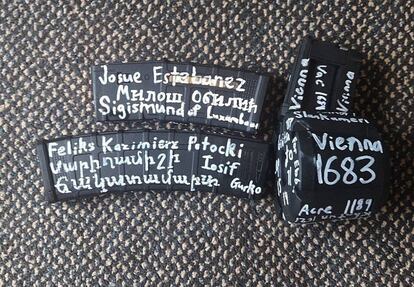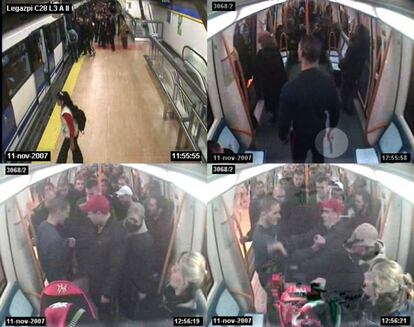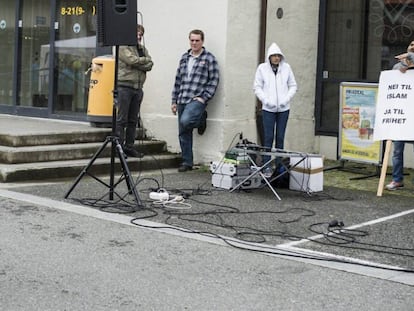New Zealand attacker had name of Spanish killer on weapon
“Josué Estébanez,” who murdered youngster Carlos Palomino in a hate crime in Madrid in 2007, was written on a rifle magazine along with citations of other right-wing figures


One of the assailants of the mass shooting at two mosques in New Zealand had written the name of Spanish neo-Nazi Josué Estébanez de la Hija on his rifle, according to The New York Times. The weapon also featured the names of far-right figures responsible for mass murders in other countries.
In 2007, Estébanez killed 16-year-old leftist activist Carlos Palomino on a Metro train in Madrid. The case marked the first time the Spanish justice system had recognized ideological reasons as an aggravating factor in a crime.
Estébanez killed 16-year-old leftist activist Carlos Palomino on a Metro train in Madrid
The ex-soldier from the Basque Country, who was sentenced to 23 years in prison, is something of a legendary figure in far-right networks. The message “Free Josué” is frequently seen written on walls across Spain. The neo-Nazi group Hogar Social Madrid often pays tribute to him and his family sold raffle tickets to raise money for the compensation owed to Palomino’s family. Estébanez has always maintained that he felt intimidated by the 16-year-old and the people he was with on the train.
Palomino has also become a key figure in leftist circles. In houses occupied by squatters, there is usually a reference to the anti-fascist activist. Outside of Spain, in countries such as Switzerland or Germany, the message “Palomino lives, the fight continues” can also be seen.
In 2009, the court found that on the morning of the murder Estébanez was on his way to an anti-immigration demonstration organized by the far-right group National Democracy, and authorized by the Madrid regional government.
When he was on the train at Legazpi Metro station, he saw a group of counter-protesters on the platform and waited “to attack any one of them under any pretext for expressing a difference of opinion,” according to the court.

Once he was aboard the train, Palomino was stabbed by Estébanez in the throat and the 16-year-old died minutes later outside Legazpi station. The court ruled that Estébanez was “fully” aware of his actions.
In May 2009, EL PAÍS was able to access the security camera footage of the incident of the train.
The weapons used by the New Zealand shooter were also covered in the names of historical figures from the Middle Ages who fought against Muslim armies, including Gastón IV, viscount of Béarn, who fought in the Reconquista period in Spain when Christian kingdoms reclaimed Muslim-held territory across the Iberian peninsula. The name “Pelayu” was also written on the weapon, which could be a reference to Don Pelayo, who became a symbol of the Christian wars against the Muslims during the Middle Ages.
English version by Melissa Kitson.
Tu suscripción se está usando en otro dispositivo
¿Quieres añadir otro usuario a tu suscripción?
Si continúas leyendo en este dispositivo, no se podrá leer en el otro.
FlechaTu suscripción se está usando en otro dispositivo y solo puedes acceder a EL PAÍS desde un dispositivo a la vez.
Si quieres compartir tu cuenta, cambia tu suscripción a la modalidad Premium, así podrás añadir otro usuario. Cada uno accederá con su propia cuenta de email, lo que os permitirá personalizar vuestra experiencia en EL PAÍS.
¿Tienes una suscripción de empresa? Accede aquí para contratar más cuentas.
En el caso de no saber quién está usando tu cuenta, te recomendamos cambiar tu contraseña aquí.
Si decides continuar compartiendo tu cuenta, este mensaje se mostrará en tu dispositivo y en el de la otra persona que está usando tu cuenta de forma indefinida, afectando a tu experiencia de lectura. Puedes consultar aquí los términos y condiciones de la suscripción digital.










































